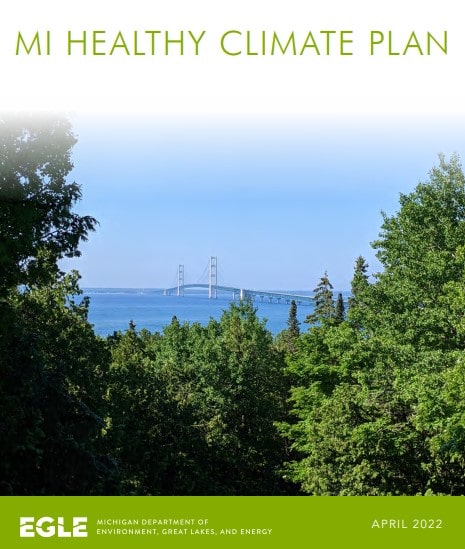With a wave of federal funding on the horizon, infrastructure is top of mind in our May News to Us. Read below for articles on drinking water, stormwater, dam, and energy infrastructure challenges. Also planned investments across the state and in the Huron River watershed.

Michigan climate plan calls for EV incentives, faster renewable transition
Governor Gretchen Whitmer’s MI Healthy Climate Plan outlines the state’s plans to reach carbon neutrality by 2050. Recommendations are centered around 6 pillars: land and water, industry, buildings, transportation, energy, and environmental justice. Click here to read HRWC’s take on the new plan in a recent blog.
State orders action to protect Milford’s drinking water supply from contamination threat
The Michigan Department of Environment, Great Lakes, and Energy (EGLE) has detected unsafe levels of vinyl chloride near the Village of Milford’s drinking water well. While the chemical has not been detected in the public water supply, EGLE has ordered ZF Active Safety U.S. Inc, the identified polluter, to install a water treatment system and provide other financial and emergency support.
Many rural towns have neglected drinking water systems for decades
Rural towns across Michigan are dealing with shrinking populations, increasing poverty, and dwindling government assistance, leading to underfunded drinking water infrastructure. To make matters worse, many rural drinking water plants face a shortage of qualified staff to manage operations and apply for grants as well as increasing costs due to new lead and PFAS testing requirements. New programs and upcoming funding from the Infrastructure Investment and Jobs Act aim to support municipalities in providing needed upgrades.
Engineers grapple with how to build climate resilience into Michigan’s stormwater infrastructure
Southeast Michigan faces increasingly intense storms due to climate change, which puts more pressure on aging stormwater systems. Without upgrades, the area is likely to see more catastrophic floods and basement backups. Many municipal engineers face outdated local drain codes that rely on historic rainfall patterns, limiting their capacity to plan for the future. Some well-resourced municipalities have developed predictive models to support infrastructure upgrades, however, more region collaboration is needed to ensure all communities have access to important information to prepare for the future.
7 key takeaways on the progress to remove Ypsilanti’s Peninsular Dam
City of Ypsilanti officials recently held a public town hall to provide updates on river restoration through the removal of the Peninsular Paper Dam and hear community concerns and support. Environmental consultant LimnoTech presented findings from sediment analyses, hydraulic models, and bathymetric surveys. The report characterizes the future floodplain, ecological, and sediment management needs and benefits of taking out the dam. Get more on the story in a WEMU 89.1 Issues of the Environment interview with HRWC’s Rebecca Esselman.



